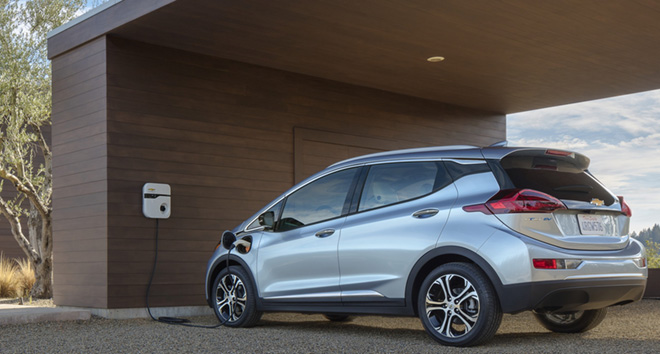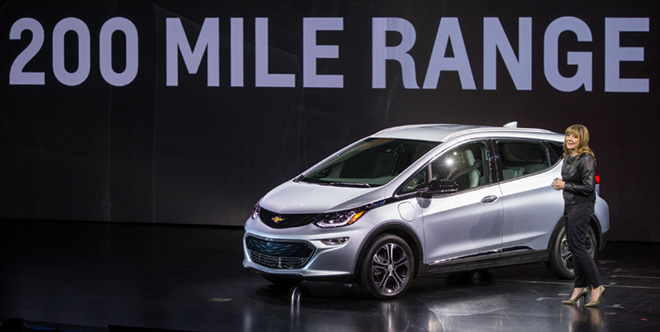GM execs are hoping the upcoming Bolt EV will sell in serious volume, and they wanted a design that’s expressive and distinct without looking too sci-fi. For this, they turned to the company’s South Korean design studio.
The center began designing the Bolt in 2012, and found it to be a tall order. Designers were forced to try new tricks while hewing to a super-tight timeline.
“It reminds you of what GM can do when we’re given a deadline and set to it,” the Bolt’s lead designer, Stuart Norris, told Automotive News. “We broke the mold on the Bolt EV.”
One challenge was to maximize aerodynamic efficiency, given the Bolt’s squat wedge shape. The Bolt has a drag coefficient of 0.32, compared to 0.24 for the Toyota Prius. “It’s a disaster for aero,” said Norris, who worked for Jaguar before joining GM.
To improve airflow, the design team added a spoiler and sharply creased winglike canards along the rear edge, as well as underbody paneling, air dams and active grille shutters that close at certain speeds. Designers also adjusted the radius of the A-pillar, modified the mirrors and fine-tuned tire coverage. Six full-size iterations of the Bolt underwent wind-tunnel testing.
Another challenge was maximizing interior space. “When we designed the Bolt EV, we kind of had this image of the vehicle as the next-generation family vehicle, a reinventing of what a family car would be,” Norris said. “So it’s got this big spacious interior volume, a ton of trunk space.”

Aiming to create an airy feel, the designers brought the windshield forward, lowered the beltline to emphasize a glassy open canopy, flattened the floor and placed the wheels at the corners. A cantilevered center console hangs suspended from the dash to enhance the spacious atmosphere up front.
More compact packaging of the motor allowed the heating and AC unit to be pushed forward, creating more cabin space. GM also developed thinner seating that delivered an inch of extra legroom.
The unique front seats may look off-center, but they allow for a wider armrest. “How do we make this seat as narrow as we possibly can without making the occupant uncomfortable? Well, we make the design asymmetrical,” Norris said.
The taillamps were incorporated into the lift door, rather than into the side body panels, in order to deliver extra space in the trunk.
“Small-car design has always been a challenging area because you’re trying to deliver more for less,” Norris said. “This is a pretty unique execution.”
Source: Automotive News



















































